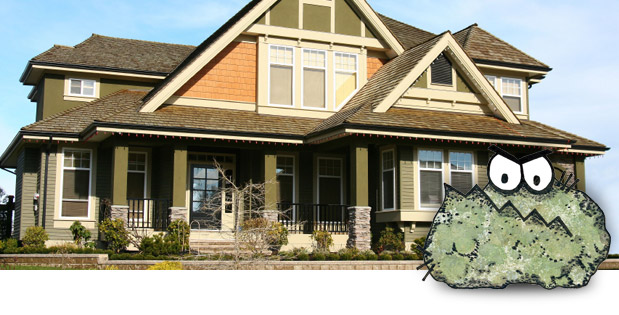Ah, mold. We’ve all had a moldy patch or two on the bathroom wall at some point. Many of us also enjoy blue cheese, and who hasn’t had last week’s bread go all blue and fuzzy?
However, there is more to it than that. Mold is everywhere — quite literally. Even if we can’t see it, it’s in the air we breathe and the food we eat. What’s more, there is no getting rid of it. At best, mold can only be controlled.
As mold is here to stay, it’s a good idea to get to know it as best as we can. Knowledge is power and can help us make the best choices about how to manage the mold in our homes and workplaces.
What Is Mold?
Mold is neither a plant nor an animal. It is a fungus, just like mushrooms.
How Does It Eat?
Mold is made up of thousands of hyphae, which look like microscopic, threadlike filaments. It uses the hyphae like roots in order to feed. They gradually extend into the food source — stale bread or living room wallpaper — and release digestive enzymes similar to those in our stomachs.
Mold gets to work way before it becomes large enough to see it with a naked eye. By the time we are able to spot it, the hyphae have spread deep below the surface. That means that cutting out the visible moldy bits does little to no good, just like trimming the leaves does not kill the entire plant.
What Does It Eat?
Pretty much everything. Mold eats our food as well as things such as dead skin cells, soap, and even paper.
How Does It Procreate?
Mold procreates using seed-like units called spores. It releases microscopic structures that look like stalks into the air. The spores form at the tips of these stalks and are then carried around by the airflow. That’s how they reach every corner, nook, and cranny.
A single mold can produce hundreds of thousands of spores. The spore count in cities like Chicago may reach up to 125,000 per cubic meter or millions of tons of spores in the atmosphere. Their staggering amount is the reason why mold is so difficult to manage.
Is Mold Dangerous to Our Health?
The good news is, not all mold is bad. Certain mold strains are used to produce the immunosuppressive drug cyclosporine and the antibiotic penicillin, which is estimated to have saved over 200 million lives. Some mold strains are even edible and help make some of the world’s greatest cheeses as well as citric acid, a popular food preservative and flavor additive.
Some types of mold, however, can be truly detrimental to human health. Black mold, for instance, releases harmful airborne chemicals known as mycotoxins. These can make moldy food potentially toxic and even interfere with our cognitive abilities.
In addition, molds such as Cladosporium can trigger allergic reactions or asthma in a large proportion of the population. Aspergillus flavus, another strain, produces toxins that are potentially lethal in high concentrations.
Even some cheese molds produce harmful substances such as the neurotoxin penitrem. That is why eating a lot of moldy food without knowing what mold strains it contains is not advisable.
Luckily for us, however, even very toxic mold strains need to be present in a high concentration in the environment to seriously endanger human health. As long as we ensure that the mold in our homes is at an optimal level, we have nothing to worry about.
What Can Be Done to Control Home Mold?
The best way to control mold growth is to hire a professional service. Mold Solutions are ready to inspect both residential and commercial in the Chicago and Greater St. Louis area. We provide a comprehensive service that includes initial site inspection, containment of the affected area, remediation, removal of damaged items and materials, cleanup and HEPA vacuum, application of antimicrobial preventative, and final inspection.








